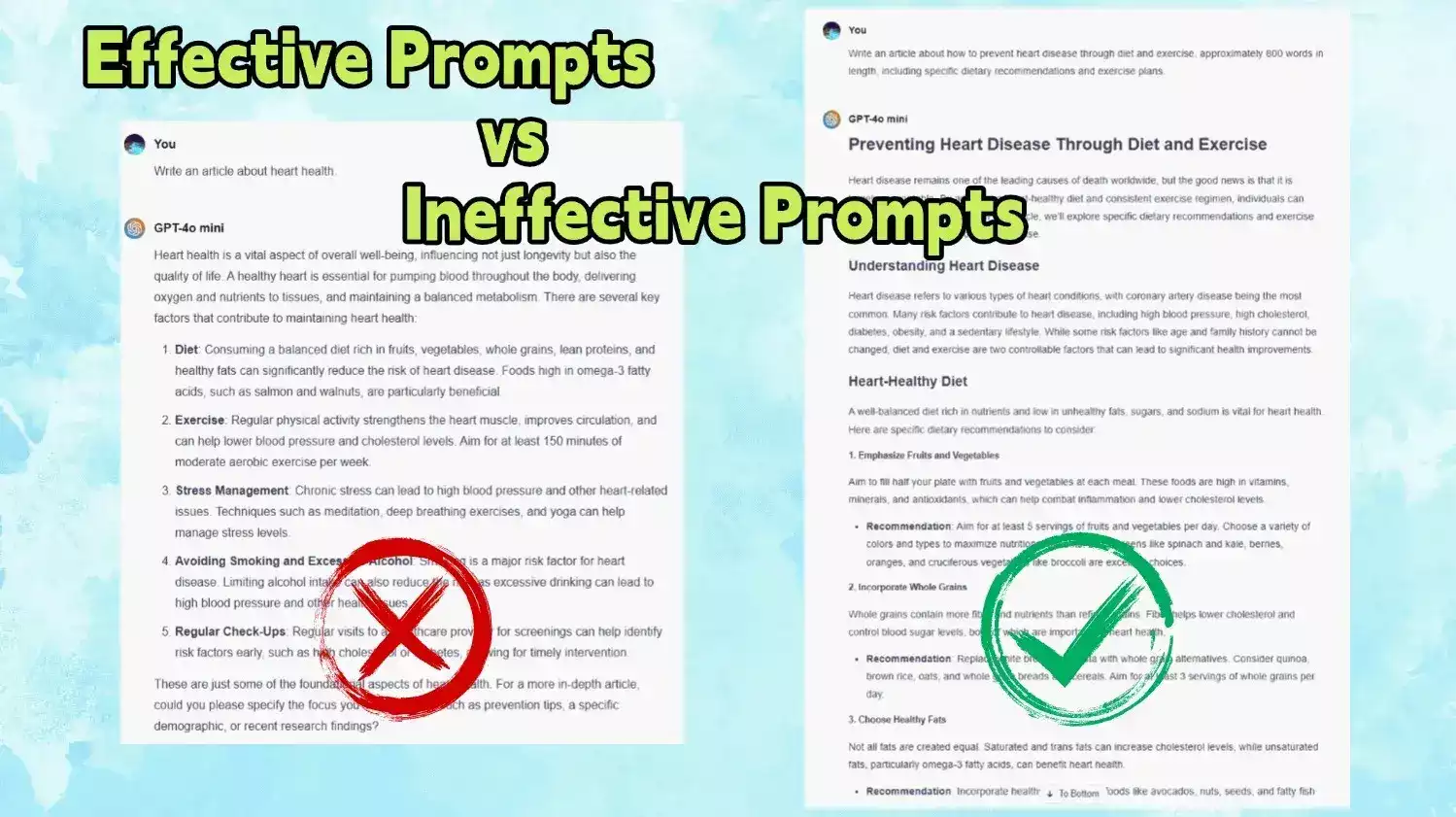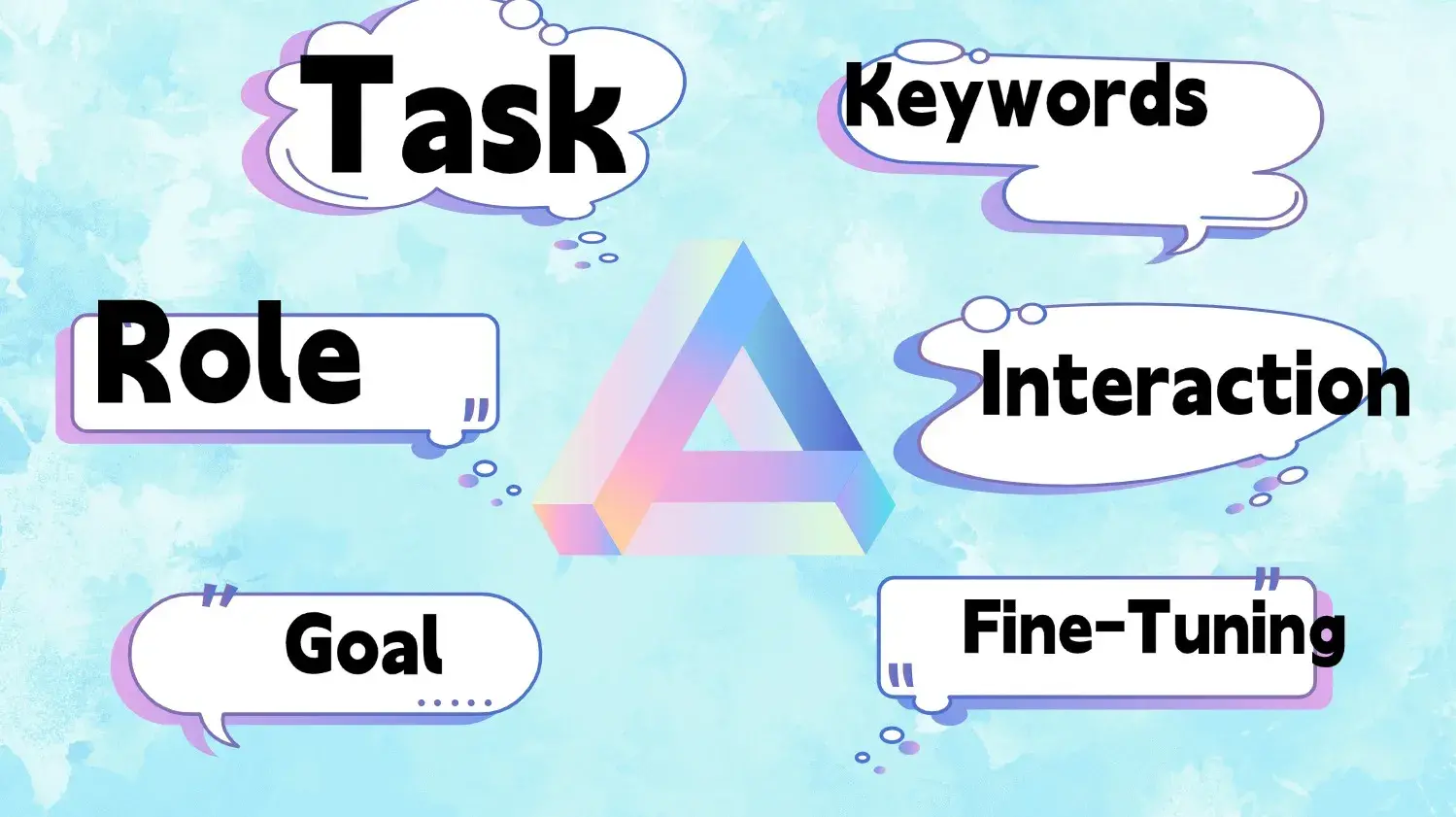A Complete Guide to Efficient AI Prompts Writing: From Beginner to Expert
Learn how to write efficient AI prompts, from foundational concepts to practical techniques, master prompt engineering, enhance work and creative efficiency!
— ChatGOT

Artificial intelligence is rapidly integrating into our professional and personal lives, but have you ever been dissatisfied with the results AI has provided you? Do you ever doubt whether you are making the most of AI?
To maximize the benefits of AI, effective prompts are crucial, and more descriptive prompts typically improve the accuracy and relevance of output results.
Therefore, this guide provides a basic overview of how to generate better prompts. Following some basic guidelines can help you achieve the desired results, and these prompting techniques will be particularly beneficial for beginners.
What is an AI Prompts?
An AI prompt is the text you enter when interacting with artificial intelligence, used to tell the AI “what you want it to do.”
An AI prompt can be a question, a description, a command, or a combination of multiple detailed instructions. These prompts form the foundation for generative AI tools such as ChatGPT, Claude, Gemini, ChatGOT, and others.
Whether it's writing articles, translating text, analyzing data, generating images, or creating presentations, AI understands your needs and provides results based on the prompts you input.
Harvard University professor Ethan Mollick once said, “Generative AI is like a machine programmed with text.” In other words, the way prompts are expressed directly determines how well AI understands and outputs results.
The Benefits of Using Effective AI Prompts
A clear, structured prompt does more than just “get the AI to answer questions”; it can also significantly improve work efficiency, creativity, and user experience. Here are the key advantages of writing good prompts:
● Improve the accuracy of responses : Clear prompts help the AI understand your needs more accurately and produce more relevant content.
● Save time and effort : Reduce the need for repeated revisions and trial-and-error, allowing you to complete tasks such as writing, summarizing, and translating more quickly.
● Improve efficiency and output quality : High-quality outputs help you quickly complete high-demand tasks such as copywriting and report analysis.
● Stimulate creativity : By interacting with AI through prompts, you can gain new ideas and expressions you may not have considered otherwise.
● Achieve content customization : Specify tone, style, structure, and more to have AI generate personalized content tailored to different purposes.
● Optimize learning and teaching : Students and teachers can interact through prompts to achieve personalized learning and instant feedback.
● Simplify information retrieval : AI can quickly extract the information you need from large amounts of content, eliminating the need for manual searching and analysis.
What Key Elements Should be Considered When Writing AI Prompts?
To generate high-quality content with AI, a clear and specific prompt is essential. When writing prompts, the following four key elements should be considered.
1. Role
Telling the AI who you are can help it respond in an appropriate tone and perspective. Example comparison:
● Vague prompt: “Write an email welcoming a new colleague.”
● Clear prompt (with role): “I am the HR manager. Please help me write an email welcoming new employee [contact person] to the company and inviting them to meet with me on [date].”
Defining the role helps the AI better understand the context and generate content that aligns with the specified identity.
2. Task
Clearly tell the AI what you want it to do. Avoid vague instructions and describe the task using direct, concise language. Example:
● “Please help me write an email to schedule a meeting on [date].”
If there are specific details (such as the meeting topic or attendees), you can provide additional information after the task.
3. Context
Contextual information helps AI complete tasks more accurately, especially when generating content based on specific circumstances. You can describe the scenario, objectives, audience, etc. Example:
● “Write an email to the new employee [contact person] to arrange a meeting on [date]. In the email, ask them if they have any questions about their new position and thank them for joining the team.”
The clearer the background information, the better it will guide the AI to produce the results you want.
4. Format
Tell the AI the format requirements for the output, including word count, structure, tone, type, etc. For example:
● “Write an email of no more than 200 words.”
● “List the pros and cons in a table.”
● “Present the content in a bullet-point list format.”
Format requirements vary across industries and application scenarios. Clearly specifying these requirements helps improve output efficiency and usability.

When writing prompts, remember: the more specific you are with the AI, the more accurately it will understand and the better the results will align with your needs.
It is recommended to include these four core elements in the prompt:
● Who I am (role)
● What I want you to do (task)
● Why it needs to be done (context)
● How it should be output (format)
This is the foundational thinking framework for writing effective prompts.
How to Write Effective AI Prompts?
Writing prompts is not simply giving instructions; it requires you to consciously design language, organize content, and plan structure, much like writing a “task description for AI.” You need to clearly state what you want it to do, how to do it, how to present it, as well as the style and background information you expect.
The following six steps will help you master the practical techniques of prompt engineering .

1. Clarify your objectives (What exactly do you want?)
This is the first step in writing any prompt: what type of results do you want the AI to produce? Do you want it to create content? Extract information? Analyze data? Or provide suggestions and inspiration? Different objectives require different prompt writing approaches.
● Common objective types :
Text creation: copywriting, articles, emails, social media posts
Content summarization: reports, conversation transcripts, web pages, academic papers
Information extraction: lists, key points, keywords, summaries
Data analysis: trend interpretation, behavioral insights, comparative explanations
Inspiration/decision support: brainstorming, option analysis, recommendations
● Example : “Please write three Instagram ad copy for a pet brand, each no more than 30 words.”
2. Clear task description (Be clear, tell it how to respond)
Writing prompts is not like writing code; there is no need for “programming language.” The closer the natural language is to human conversation, the better.
The key to this step is to clearly describe the task and specify the desired output format, allowing the AI to quickly align with your expectations.
● Content to be specified includes :
What the AI should do (write, generate, organize, translate, polish, etc.)
Output format (paragraphs, lists, summaries, emails, scripts, tables, etc.)
Any word count, sentence count, or structural requirements (headings/conclusions/CTAs, etc.)
● Example : “Please write a welcome message for new users registering on a fitness app. The tone should be positive and inspiring, and the message should be kept under 100 words.”
3. Provide context and role information (Set the scene and define who's talking)
AI won't automatically know who you are, who you're talking to, or what role you want to respond in.
By setting the “role” and “context,” you can significantly improve the relevance and quality of the output.
● You can set :
Who you are: Product Manager / HR / Teacher / Marketer
Who the AI is: Doctor / Writing Consultant / Brand Expert
Who it's for: Users / Interviewers / Clients / Beginners
● Example : “You are a senior career advisor. Write an email encouraging a candidate who has just been rejected to continue applying for jobs. The tone should be sincere, supportive, and constructive.”
4. Specify style and tone (Be specific to get relevant results)
The same sentence can be written in different tones, such as advertising, notifications, speeches, or even jokes. You need to tell the AI what tone and style you want.
● Common style options :
Formal / Informal
Casual / Inspiring / Humorous / Emotional
Concise and direct / Descriptive / Professional and authoritative
● Example: “Please write an inspiring welcome message for new users who have just registered for a fitness app, keeping the word count under 100.”
5. Include keywords and specific terms (Use domain-specific keywords)
Including keywords in the prompt serves two important purposes:
① Focus on the topic to avoid going off-topic
② Generate output that better aligns with industry/contextual requirements (especially important for SEO, vertical content, and image generation)
Use phrases like “Please include the following keywords” or “Please avoid using xxx” to guide the language style; for image generation, use scene + style + lighting, e.g., “Cyber city + rainy night + neon lighting”
● Examples of keyword types :
Technical terms (finance, medicine, law)
SEO keywords (to improve search rankings)
Image style terms (illustration style, lighting effects, 8K realism, etc.)
● Example : “Write a short paragraph introducing the application of AI automation in financial statements. Please include the keywords: report automation, data cleaning, audit efficiency, machine learning.”
6. Treat AI as a conversation partner (Talk to the AI, not just at it)
You can converse with AI as you would with a person, rather than just sending a single prompt. If the first output is not ideal, there is no need to start over; simply adjust based on the existing content.
● Examples of interactive prompts :
“Please write a more formal version.”
“Please add a conclusion to the above paragraph, summarizing the key points.”
“This sentence is too complex; please condense it to 50 words or less.”
“Please add an encouraging closing sentence.”
● Complete dialogue example :
You say: “Please write a product description targeting tech enthusiasts.”
After the AI outputs, you say: “Please add more emotional appeal and emphasize innovation.”
You then say: “It's too long; condense it to 150 words or less.”
The more the AI “adapts” to you, the more its output aligns with your vision.
In summary, crafting clear prompts = unlocking the AI's full potential. The clearer your prompts, the more the AI's responses will feel like “customized answers” rather than “random replies.”
Mastering the Value of AI Prompts: A Core Skill in the AI Era
In today's rapidly evolving landscape of generative AI , crafting effective prompts is no longer the exclusive domain of technical experts—it has become a critical skill for all knowledge workers, creators, decision-makers, and even ordinary users.
Just as search engines revolutionized how people access information, mastering prompt engineering will determine whether you can truly unlock the productivity of artificial intelligence.
At the same time, we must recognize that AI tools have limitations:
● They may output incorrect or inconsistent information;
● They may generate inappropriate responses due to biases in training data;
● They cannot understand the deeper meaning or value judgments of context like humans can.
Therefore, prompt writing is not just a language skill but also a sense of responsibility. It requires us to maintain a clear judgment of content quality, factual accuracy, and ethical issues while leveraging AI's potential.